Are your stove drip pans sporting a stubborn coat of grease and grime that seems impossible to remove?
Fear not, for in the realm of kitchen maintenance, conquering the challenge of cleaning stove drip pans is a feat worthy of a master cleaner!
These often-neglected yet crucial components of your cooking apparatus deserve attention and care to keep your kitchen sparkling and your culinary adventures uninterrupted.
Dive into our comprehensive guide on how to clean stove drip pans, where we unravel the mysteries of grease-busting techniques and unveil the secrets to restoring your drip pans to their pristine glory!
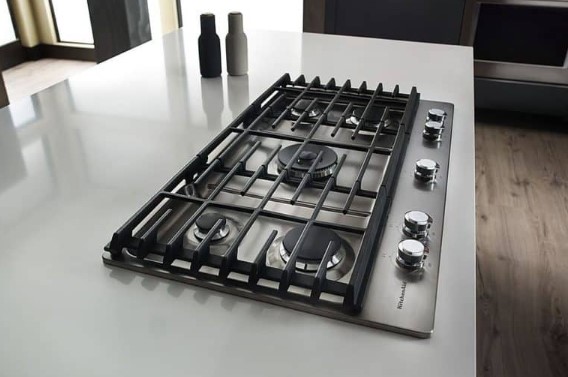
What Are Stove Drip Pans?
Stove drip pans, also known as burner pans or drip bowls, are essential components of gas and electric stovetops.
They are typically located beneath the burners to catch drips, spills, and food particles during cooking, preventing them from directly contacting the heating elements or the stove surface.
These pans come in various shapes and sizes to fit different stove models and burner configurations. Stove drip pans are usually made of durable materials like porcelain-coated steel or chrome-plated steel, ensuring easy cleanup and heat resistance.
Regular cleaning and maintenance of drip pans help in maintaining a clean and functional stovetop, prolonging the lifespan of the appliance.
8 Ways To Clean Stove Drip Pans
Stove drip pans cannot be cleaned directly on the stove. Though theoretically feasible, we think that approach would be more difficult, so it’s preferable to remove them. Make sure they have cooled down first, though, before proceeding. Prioritize safety—we don’t want anyone burned!
Method #1: Good Wash
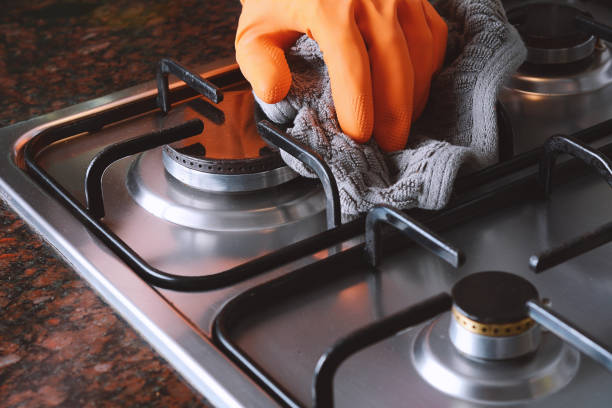
The Good Wash method for cleaning stove drip pans involves thorough washing with hot, soapy water.
Start by removing the drip pans from the stove and placing them in a sink or tub. Fill the sink or tub with hot water and add a generous amount of dish soap.
Let the drip pans soak for about 30 minutes to loosen grease, food particles, and stains. After soaking, use a sponge or scrub brush to scrub the drip pans, paying attention to areas with stubborn buildup.
Rinse the pans thoroughly with clean water to remove soap residue, and then dry them completely before placing them back on the stove. This method is effective for regular maintenance and keeping your drip pans clean and functional.
Method #2: Dishwashing Liquid

The Dishwashing Liquid method is a simple yet effective way to clean stove drip pans. Begin by removing the drip pans from the stove and placing them in the sink.
Squirt a generous amount of dishwashing liquid directly onto each drip pan, ensuring full coverage. Fill the sink with hot water, enough to submerge the drip pans completely.
Let the pans soak for about 15-20 minutes to loosen grease and grime. After soaking, use a sponge or scrub brush to scrub the drip pans thoroughly, focusing on areas with stubborn stains.
Rinse the pans with clean water to remove soap residue, and then dry them completely before placing them back on the stove. This method is quick, easy, and helps maintain a clean stovetop.
Dawn is a good fit for this task, in our opinion.
Method #3: Dishwashing Liquid And Baking Soda
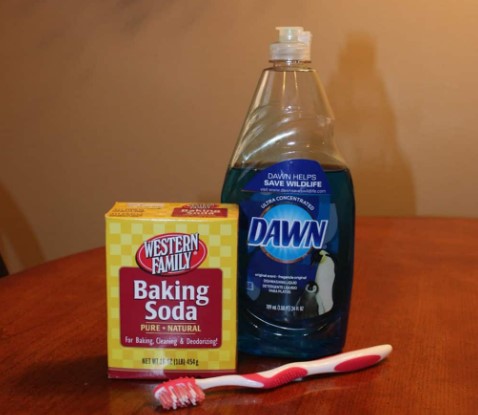
The Dishwashing Liquid and Baking Soda method combines the grease-cutting power of dishwashing liquid with the stain-lifting properties of baking soda for effective cleaning of stove drip pans.
Start by removing the drip pans from the stove and placing them in the sink. Squirt a generous amount of dishwashing liquid onto each drip pan, covering them evenly.
Next, sprinkle baking soda generously over the dishwashing liquid, creating a thick paste on the pans. Pour hot water over the pans to create a foamy solution, then let them soak for about 30 minutes.
After soaking, use a sponge or scrub brush to scrub the drip pans, focusing on tough stains and residues. Rinse the pans thoroughly with clean water, ensuring all soap and baking soda residue is removed.
Finally, dry the pans completely before placing them back on the stove. This method effectively removes grease, grime, and stains from drip pans, leaving them clean and shiny.
Method #4: Vinegar And Baking Soda
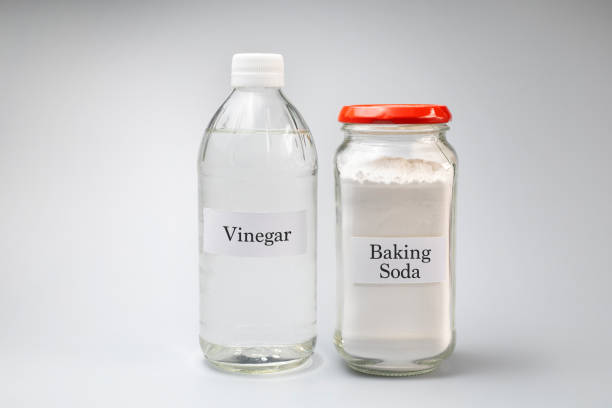
The Vinegar and Baking Soda method is a powerful combination for cleaning stove drip pans. Begin by removing the drip pans from the stove and placing them in the sink or a large container.
Sprinkle baking soda liberally over the drip pans, ensuring even coverage. Next, pour vinegar over the baking soda-covered pans. The mixture will fizz and bubble, which helps to lift and loosen grease, stains, and residues.
Let the pans soak in the vinegar and baking soda solution for about 1-2 hours, allowing the reaction to break down stubborn buildup.
After soaking, use a sponge or scrub brush to scrub the drip pans, focusing on areas with tough stains.
Rinse the pans thoroughly with clean water to remove the vinegar and baking soda residue. Finally, dry the pans completely before placing them back on the stove. This method effectively removes grease and grime from drip pans, leaving them clean and ready for use.
Method #5: Hydrogen Peroxide And Baking Soda
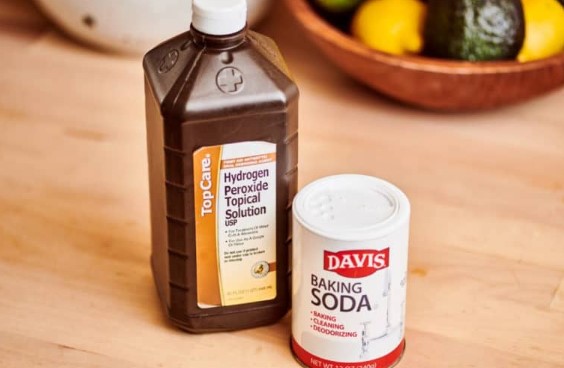
The Hydrogen Peroxide and Baking Soda method is an effective way to tackle stubborn stains and grime on stove drip pans.
Begin by removing the drip pans from the stove and placing them in a sink or tub. Sprinkle a generous amount of baking soda over the drip pans, ensuring even coverage.
Next, pour hydrogen peroxide over the baking soda-covered pans, creating a foamy mixture. The combination of hydrogen peroxide and baking soda helps to break down grease and lift stains.
Let the pans soak in the mixture for about 1-2 hours, allowing the cleaning agents to work their magic. After soaking, use a sponge or scrub brush to scrub the drip pans, focusing on areas with tough residues.
Rinse the pans thoroughly with clean water to remove the baking soda and hydrogen peroxide residue. Finally, dry the pans completely before placing them back on the stove. This method effectively removes stubborn stains and leaves the drip pans clean and shiny.
Method #6: Ammonia
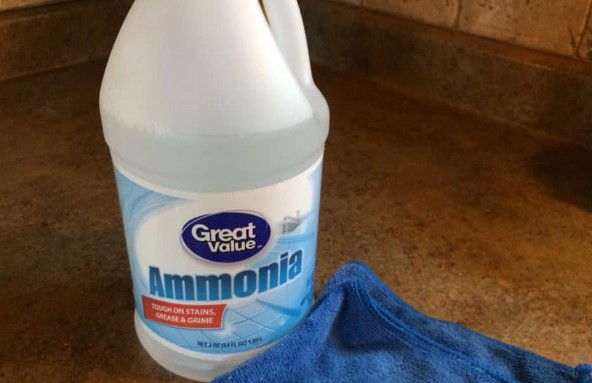
The Ammonia method is a potent option for cleaning heavily soiled stove drip pans. Here’s how to do it:
- Preparation: Start by ensuring proper ventilation in the area where you’ll be working. Open windows or use a fan to keep the air circulating.
- Safety Gear: Wear gloves and safety goggles to protect your skin and eyes from contact with ammonia.
- Container Setup: Place the drip pans in a large, sealable plastic bag or a plastic container with a lid that can accommodate the pans.
- Ammonia Application: Pour a small amount of household ammonia into the bag or container, enough to create fumes but not so much that it spills over the pans.
- Sealing: Seal the bag tightly or cover the container with its lid to trap the fumes inside. Leave the pans to soak in the ammonia fumes overnight or for several hours.
- Ventilation: After the soaking period, carefully open the bag or container in a well-ventilated area. Avoid inhaling the ammonia fumes directly.
- Scrubbing: Use a sponge, scrub brush, or scrubbing pad to scrub the drip pans, focusing on areas with stubborn grease and grime. The ammonia fumes should have loosened the buildup, making it easier to remove.
- Rinsing: Rinse the pans thoroughly with clean water to remove any ammonia residue.
- Drying: Dry the pans completely before placing them back on the stove.
Note: Handle ammonia with caution, following safety guidelines and instructions on the product label. Avoid mixing ammonia with other cleaning products, especially bleach, as it can produce harmful gases.
Method #7: Bar Keepers Friend
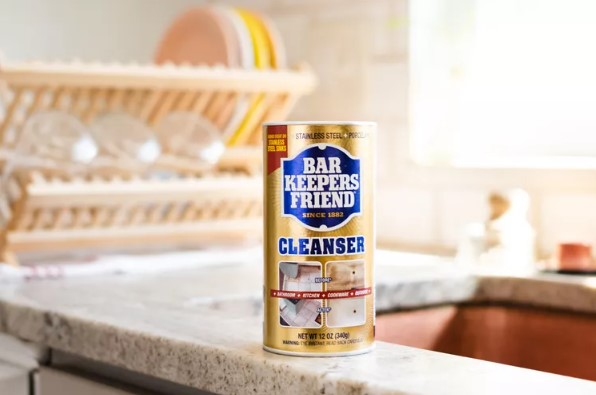
The Bar Keepers Friend method involves using a specialized cleaning product called Bar Keepers Friend, which is effective for removing tough stains and restoring shine to stove drip pans.
To clean your drip pans using Bar Keepers Friend, start by removing them from the stove and placing them in a sink or tub. Wet the drip pans, then sprinkle Bar Keepers Friend powder or apply the liquid cleaner directly onto the pans.
Use a sponge, scrub brush, or scrubbing pad to scrub the drip pans thoroughly, focusing on areas with stubborn stains and grime. Allow the cleaner to sit on the pans for a few minutes to penetrate and lift the dirt.
Rinse the pans thoroughly with clean water to remove the cleaner and residue. Finally, dry the pans completely before placing them back on the stove.
Bar Keepers Friend is known for its abrasive yet non-damaging formula, making it suitable for various metal surfaces including stainless steel, chrome, and porcelain-coated drip pans.
Method #8: Oven Cleaner
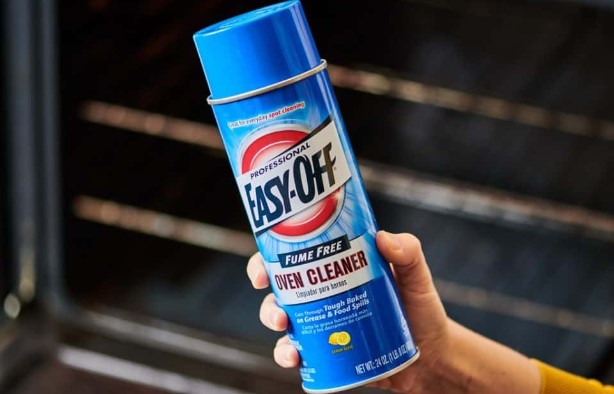
Using oven cleaner is another method to clean stove drip pans effectively, especially for heavy grease and stubborn stains. Here’s how to do it:
- Safety Precautions: Put on gloves and work in a well-ventilated area, as oven cleaner can be harsh and emit strong fumes.
- Remove Drip Pans: Take out the drip pans from the stove and place them on a protected surface like newspaper or a garbage bag to catch drips.
- Spray Cleaner: Spray oven cleaner generously on both sides of the drip pans, ensuring full coverage of the stains and grease.
- Soak: Let the oven cleaner sit on the drip pans for the time recommended on the product label, usually around 30 minutes to 1 hour.
- Scrub: Use a sponge, scrub brush, or scrubbing pad to scrub the drip pans thoroughly, focusing on areas with heavy buildup. The cleaner should help loosen the grease and stains.
- Rinse: Rinse the drip pans thoroughly with water to remove the cleaner and residue. You may need to repeat this step if there are still stubborn stains.
- Dry: Dry the drip pans completely before placing them back on the stove to prevent rusting or water spots.
Note: Make sure to follow the instructions and safety guidelines provided by the oven cleaner manufacturer. Avoid using oven cleaner on aluminum or painted surfaces, as it can cause damage.
Things to keep in mind
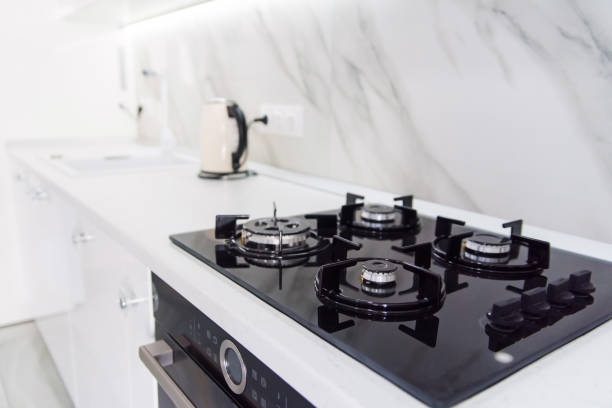
When cleaning stove drip pans, there are several important things to keep in mind:
When to Clean
- Clean your stove drip pans regularly to prevent grease buildup and stubborn stains. It’s recommended to clean them whenever you notice visible dirt, spills, or discoloration.
Safety Precautions
- Always prioritize safety when cleaning stove drip pans. Wear gloves to protect your hands from chemicals and hot water, and work in a well-ventilated area to avoid inhaling fumes from cleaning products.
Cleaning Methods
- Choose a cleaning method that suits the level of dirt and stains on your drip pans. Gentle methods like using dishwashing liquid or baking soda are suitable for regular maintenance, while stronger methods like ammonia or oven cleaner can be used for heavy buildup.
Regular Maintenance
- Regularly wiping down your drip pans after cooking can help prevent grease and food particles from accumulating, making deep cleaning easier and less frequent.
When to Replace
- If your drip pans are heavily damaged, rusted, or have deep pitting that cannot be cleaned, it may be time to replace them. Consider replacing drip pans that are no longer effective in catching spills or are affecting the performance of your stove.
By keeping these points in mind, you can maintain clean and functional stove drip pans, ensuring a hygienic cooking environment and optimal stove performance.
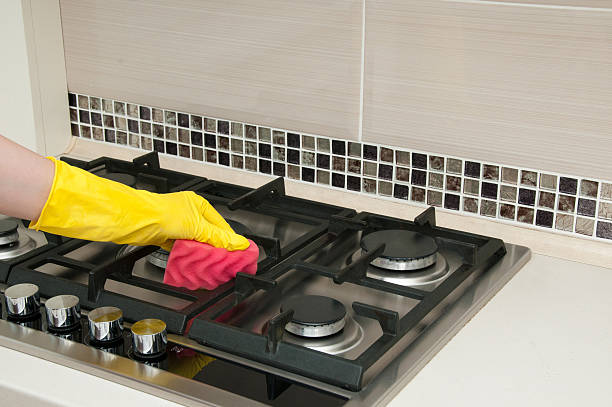
Frequently Asked Questions (FAQs) – How To Clean Stove Drip Pans
Q: Why is it important to clean stove drip pans regularly?
A: Keeping your stove drip pans clean not only enhances the appearance of your kitchen but also ensures efficient cooking by preventing flare-ups and maintaining proper heat distribution.
Q: What are some easy ways to clean stove drip pans?
A: You can clean stove drip pans easily by soaking them in a mixture of hot water and dish soap, using baking soda and vinegar for stubborn stains, or using commercial cleaners designed for this purpose.
Q: Can I use natural ingredients to clean stove drip pans?
A: Yes, natural ingredients like baking soda, vinegar, lemon juice, and hydrogen peroxide are effective in cleaning stove drip pans without harsh chemicals, making them safe for food preparation areas.
Q: How often should I clean my stove drip pans?
A: It’s recommended to clean stove drip pans at least once a month, or more frequently if you notice buildup or spills to prevent grease and food residue from hardening.
Q: Are there any tips for maintaining clean stove drip pans?
A: Yes, you can maintain clean stove drip pans by wiping up spills immediately, using drip pan liners for easier cleanup, and avoiding cooking at high temperatures to prevent excessive grease buildup.
Q: Can I put stove drip pans in the dishwasher?
A: While some stove drip pans are dishwasher-safe, it’s best to check the manufacturer’s instructions. If unsure, hand washing with mild detergent and warm water is a safe and effective method.
Q: What are the benefits of regularly cleaning stove drip pans?
A: Regular cleaning of stove drip pans prolongs their lifespan, prevents odors from accumulating, reduces the risk of grease fires, and ensures a more pleasant cooking experience.
Q: Is it difficult to clean heavily soiled stove drip pans?
A: With the right cleaning products and techniques, even heavily soiled stove drip pans can be cleaned effectively. Patience and persistence are key to restoring them to a sparkling clean condition.
Q: Are there any DIY hacks for cleaning stove drip pans?
A: Yes, you can use a paste of baking soda and water, or a mixture of vinegar and baking soda, to scrub away tough stains on stove drip pans without harsh chemicals or scrubbing pads.
Q: What should I do if my stove drip pans are beyond cleaning?
A: If your stove drip pans are severely damaged or corroded, consider replacing them with new ones to maintain optimal cooking performance and aesthetics in your kitchen.
Conclusion
Cleaning stove drip pans is a crucial yet manageable task that contributes significantly to maintaining a clean and functional kitchen environment.
By following the outlined methods and tips, you can effectively remove stubborn stains, grease buildup, and food residue from your stove drip pans.
Regular cleaning not only enhances the appearance of your stove but also ensures its optimal performance and longevity.
With the right cleaning techniques and a bit of effort, you can keep your stove drip pans looking pristine and ensure a pleasant cooking experience for years to come.
Other Articles You May Also Like:
- How To Clean Ceramic Pan (10 Easy Ways)
- How To Clean Stainless Steel Pans (13 Cool Ways)
- How To Clean Baking Sheets (6 Easy Ways)
- How To Clean Muffin Pan (4 Easy Steps)
- How To Clean A Non Stick Pan (5 Revealing Steps)
- How To Make A Ceramic Pan Non Stick Again (6 Essential Steps)
- How To Fix Scratched Non Stick Pan (4 Easy Steps)
- How To Grill Without A Grill (4 Helpful Substitutes)